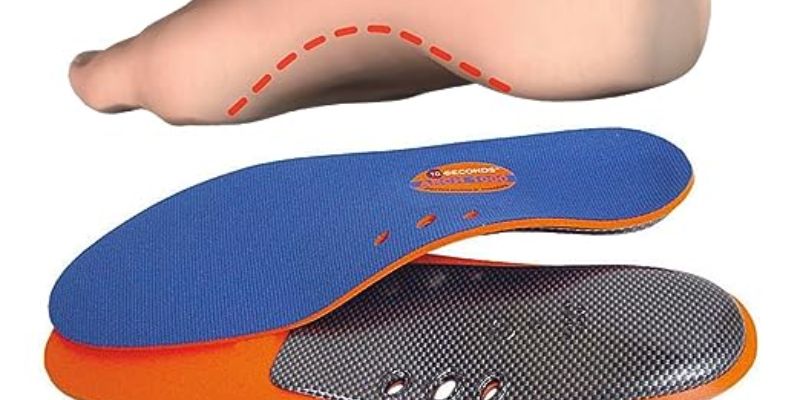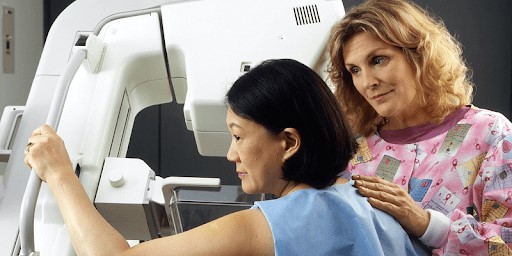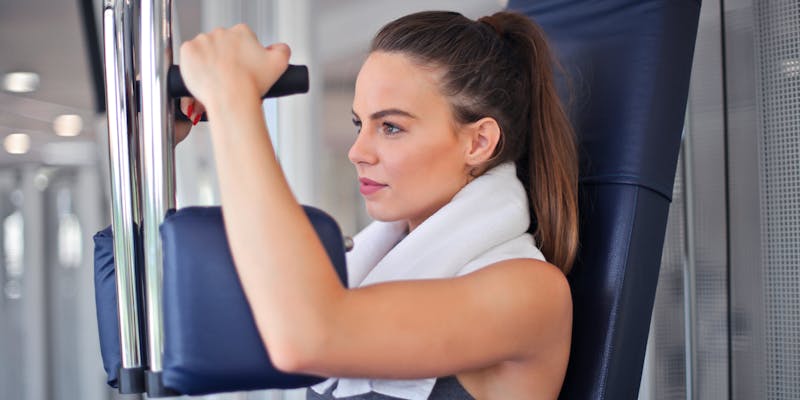Techniques to Maintain and Improve Your Posture as You Grow Older
Nov 24, 2023 By Madison Evans
Individuals of various age groups have difficulties with poor posture, particularly slouching. Consequently, a significant proportion of the population might potentially derive advantages from receiving guidance on how to maintain a more erect bodily position, whether when sitting or standing. Improving posture has particular significance for the aged population.
These nine simple exercises have the potential to assist individuals in enhancing or preserving their posture, whether they choose to do so for personal improvement or to mitigate the effects of aging.
The Significance of Optimal Posture in the Aging Process

When an individual maintains proper posture, the musculoskeletal system is not subjected to excessive strain or exertion during periods of sitting, standing, or physical activity. This phenomenon represents the harmonious interaction and coordination between the skeletal and muscular systems. Age-related changes in posture may be attributed to several factors, such as diminished muscle strength, degeneration of spinal discs, and the influence of gravitational forces. This phenomenon has the potential to result in a hunched posture, protruded chin, or asymmetrical shoulders, all of which may alter our typical walking pattern.
The Long-Term Effects of Bad Posture
In the context of old age, poor posture incurs a dual burden. Possible physical effects may include chronic pain, reduced mobility, an increased risk of falls, and issues such as disc herniation. These difficulties have a significant influence on our daily existence and have the potential to escalate into more severe health complications if not addressed promptly. The detrimental effects of poor posture extend to both an individual's self-assurance and psychological well-being. The experience of seeing changes in one's physical appearance has been associated with several negative psychological outcomes, including diminished self-confidence, social isolation, and feelings of despair. Hence, it is essential to emphasize the importance of maintaining proper posture for overall health and well-being.
Techniques to Improve Your Posture

Technique 1: Flexibility Training
In order to maintain proper posture, it is important to engage in stretching activities. There are several applications associated with their use, such as enhancing mobility, mitigating muscle stress, and augmenting flexibility. Regularly engaging in exercises that assist realign the body and enhance posture may effectively treat and alleviate imbalances via stretching. Incorporation of basic stretching exercises, such as the cat-cow and shoulder rolls, into one's routine activities is recommended. These techniques are beneficial for elongating and loosening muscles, especially those that have become tense as a result of sedentary behavior or extended periods of sitting.
Technique 2: Enhancing Muscular Endurance
The musculature of the human body serves as the primary structural support system for maintaining posture. Consequently, the attainment and sustenance of muscle strength, which is crucial for maintaining proper posture, cannot be achieved without consistent engagement in strength training exercises. Enhancing the musculature of the abdominal region, the posterior chain, and the lower extremities establishes a foundation for enhanced postural alignment. Planks, squats, and rows are considered to be three of the most basic exercises in physical fitness. These exercises not only contribute to body shape, but they also promote strength and flexibility in the postural muscles.
Technique 3: Employing Ergonomics in Home and Professional Environments
Our posture is significantly influenced by our environment. Ergonomic approaches promote the adoption of healthy postures by customizing living and working environments to meet individual needs. In work or study environments, it is recommended to appropriately adjust desks and chairs to ensure that the user's arms form a right angle with the floor when engaging in typing activities. It is advisable to allocate resources towards acquiring lumbar support cushions and other items that facilitate the maintenance of proper posture, and to include their frequent usage within one's domestic environment. Well-designed ergonomics facilitate the maintenance of a neutral spine posture throughout daily activities, hence reducing the effort required.
Technique 4: Keeping Your Attention Focused
The level of consciousness we possess significantly influences our bodily alignment. The practice of mindfulness has the potential to contribute to the maintenance of proper posture via its ability to enhance our awareness of areas in our body where tension is often held. By maintaining vigilant focus, one may mitigate the development of detrimental postural patterns such as prolonged periods of slouching. Basic mindfulness exercises include the practice of pausing at regular intervals and engaging in deep breathing. The temporary interruptions in conscious awareness have the potential to gradually result in an enhanced habitual body position.
Technique 5: Check Your Posture Frequently
The enhancement of one's posture necessitates ongoing self-assessment. Periodically assessing one's posture against a wall or using a full-length mirror might reveal any inconsistencies. Establish alarms or use sticky notes as reminders to regularly assess and modify one's posture. Wearable devices and software specifically developed to address the issue of bad posture provide further support via the provision of instant feedback and alerts to users.
Technique 6: Yoga and Pilates
Although yoga and Pilates are distinct practices, they both have the potential to enhance an individual's posture. Both disciplines emphasize the need of core strength, flexibility, and body awareness. Various yoga asanas have been shown to be beneficial for improving spinal alignment. Among them, Tadasana, also known as Mountain Pose, and Bhujangasana, often referred to as Cobra Pose, have been particularly recognized for their efficacy in this regard. Pilates, an exercise method that emphasizes precise movement control and the development of core strength, incorporates specific exercises such as "The Saw" and "The Spine Stretch" to promote optimal posture and enhance muscular strength and flexibility. Incorporating any or both of these practices into your daily regimen will facilitate the improvement and maintenance of your posture.
Technique 7: Chiropractic and Physiotherapy
Alternative treatments for postural abnormalities including chiropractic manipulations and physical therapy techniques. The combination of physical activity and the practice of mindfulness has been suggested to potentially alleviate moderate pain symptoms. However, in cases of more severe pain, it is advisable to seek professional medical attention. The assistance of a chiropractor, who has expertise in spinal adjustments, may provide relief for those with postural instabilities. In contrast, physical therapists provide therapeutic interventions and prescribe tailored exercise regimens with the explicit aim of targeting musculoskeletal issues that are implicated in the development of suboptimal posture. Both therapies provide personalized strategies for gradually improving posture.
Technique 8: Put on Sturdy Shoes
The feet play a significant role in maintaining an upright posture due to their function in supporting the rest of the body. Improper footwear has the potential to induce misalignment throughout the body, including the spinal column, hence exerting a range of impacts. Select a pair of shoes that has an arch support mechanism, a sole exhibiting a degree of cushioning, and a desirable amount of snugness. Prolonged use of high-heeled footwear imposes excessive strain on the feet, lower limbs, and spinal region. Investing in high-quality footwear is essential for ensuring proper support and alignment of the whole body.
Technique 9: Make Good Sleeping Positions a Priority
The significance of sleep ergonomics lies in their role in preserving proper posture. Due to the extended durations individuals spend in a supine position, the maintenance of spinal well-being has heightened significance. The optimal sleeping postures for maintaining spinal health include either lying on the back with a pillow supporting the neck and knees, or lying on the side with a pillow positioned between the knees. It is advisable to refrain from sleeping in a prone position due to the potential pressure it exerts on the spinal column and cervical region. The act of allocating resources towards the acquisition of a superior mattress, along with the consistent adherence to certain specific bodily positions, will provide significant benefits for the overall well-being of the spinal column.
Conclusion
In today's world, where a sedentary lifestyle is increasingly common, prioritizing posture becomes even more critical, especially as we age. As outlined, posture not only affects our physical well-being but has profound impacts on our mental health and self-perception. These nine techniques, ranging from regular exercises to mindful practices and ergonomic adjustments, offer a comprehensive approach to ensure graceful aging. Implementing even a few of these methods can make a marked difference. As we navigate the journey of aging, let's pledge to give our posture the attention it deserves, ultimately paving the way for a healthier, more confident, and vibrant self.

What is Severe Autism

Natural Solutions: 7 Home Remedies for Alleviating a Cough

Best Insoles for Plantar Fasciitis

Can AI-Supported Mammogram Screening Really Help With Detection?

Gym Makeup: Discover the Impact on Your Skin and What to Avoid

Wholesome Snacking: 7 Vegan Recipes to Support Your Weight Loss Journey

How to Stop Overthinking: 6 Easy Ways


